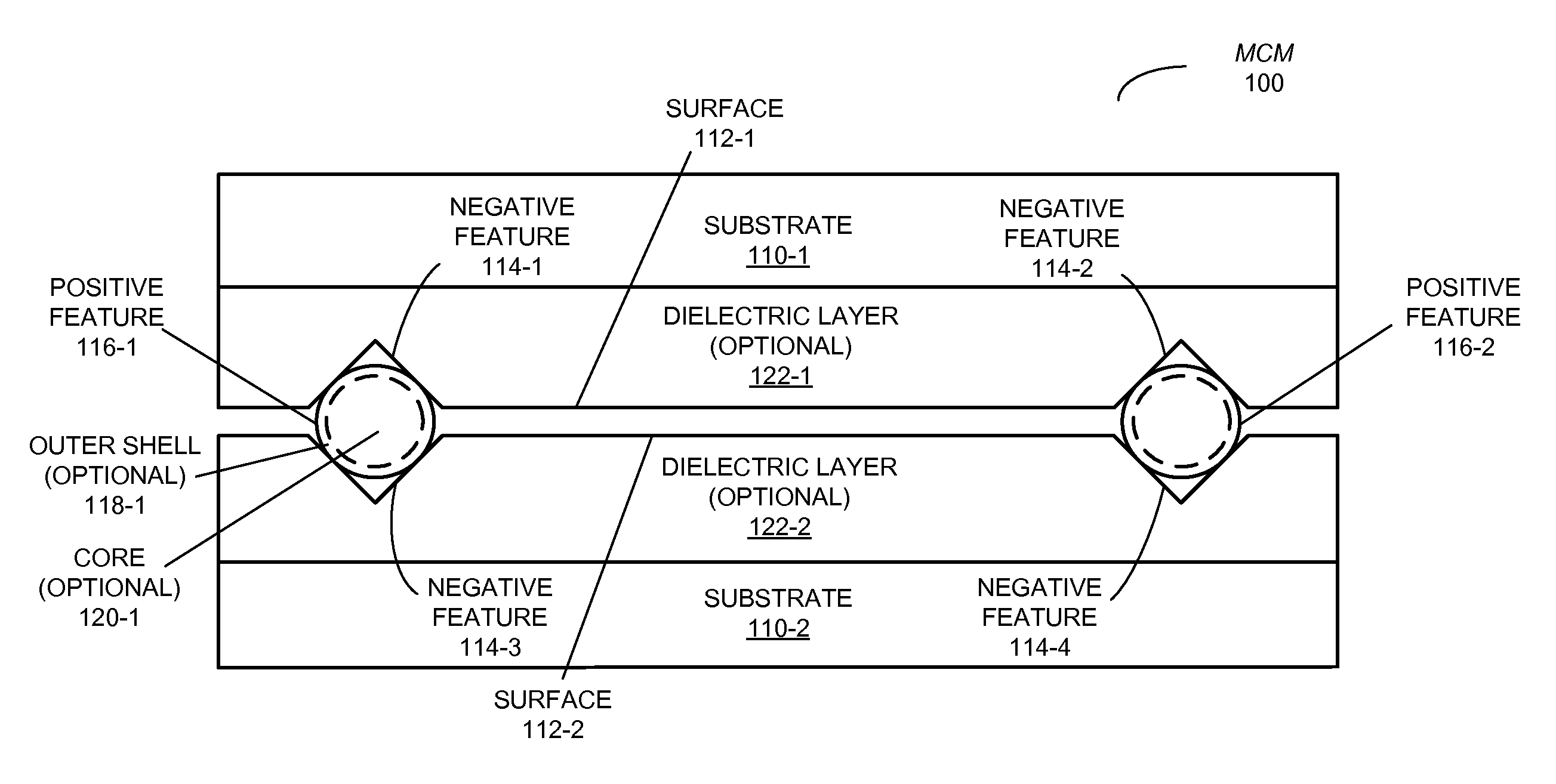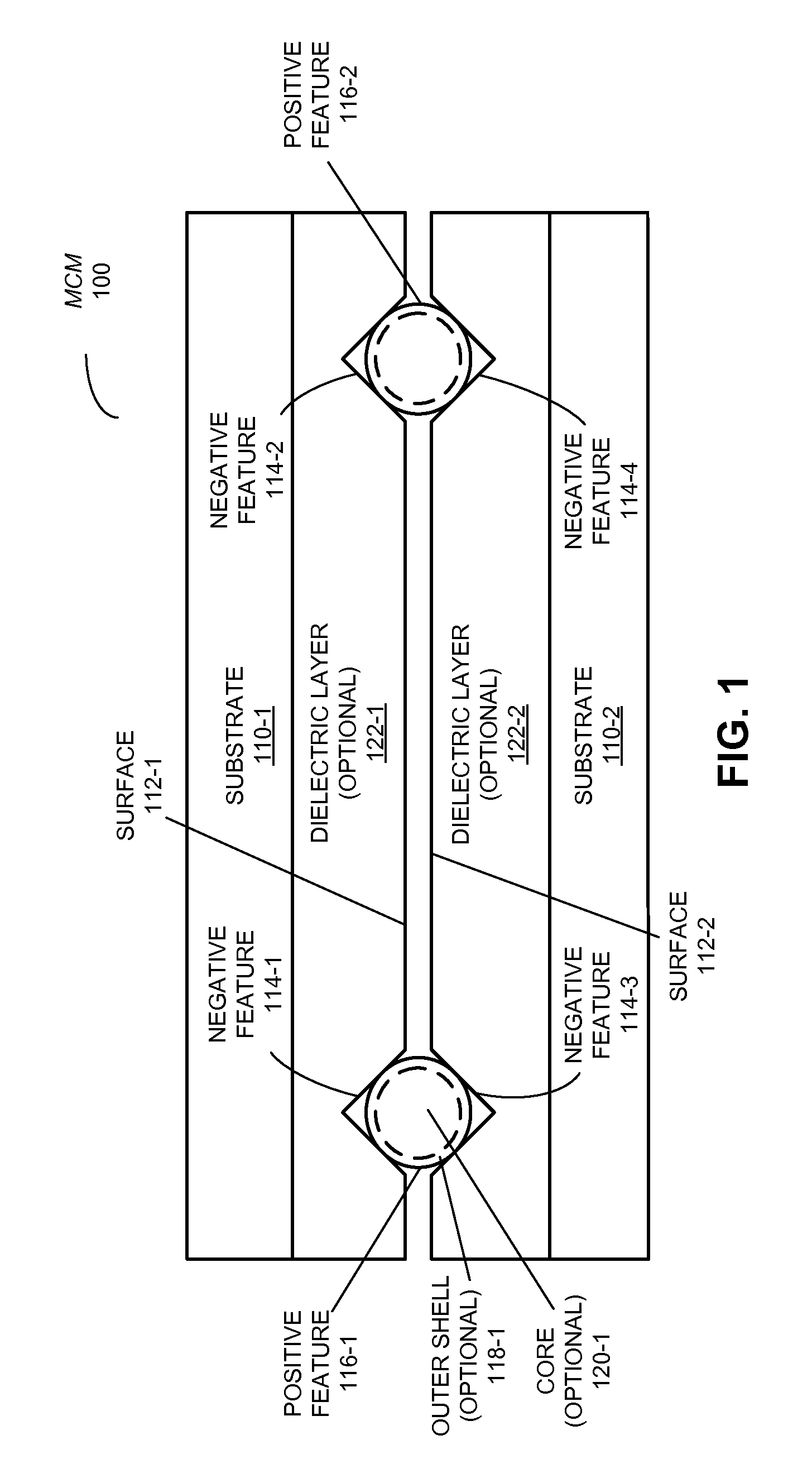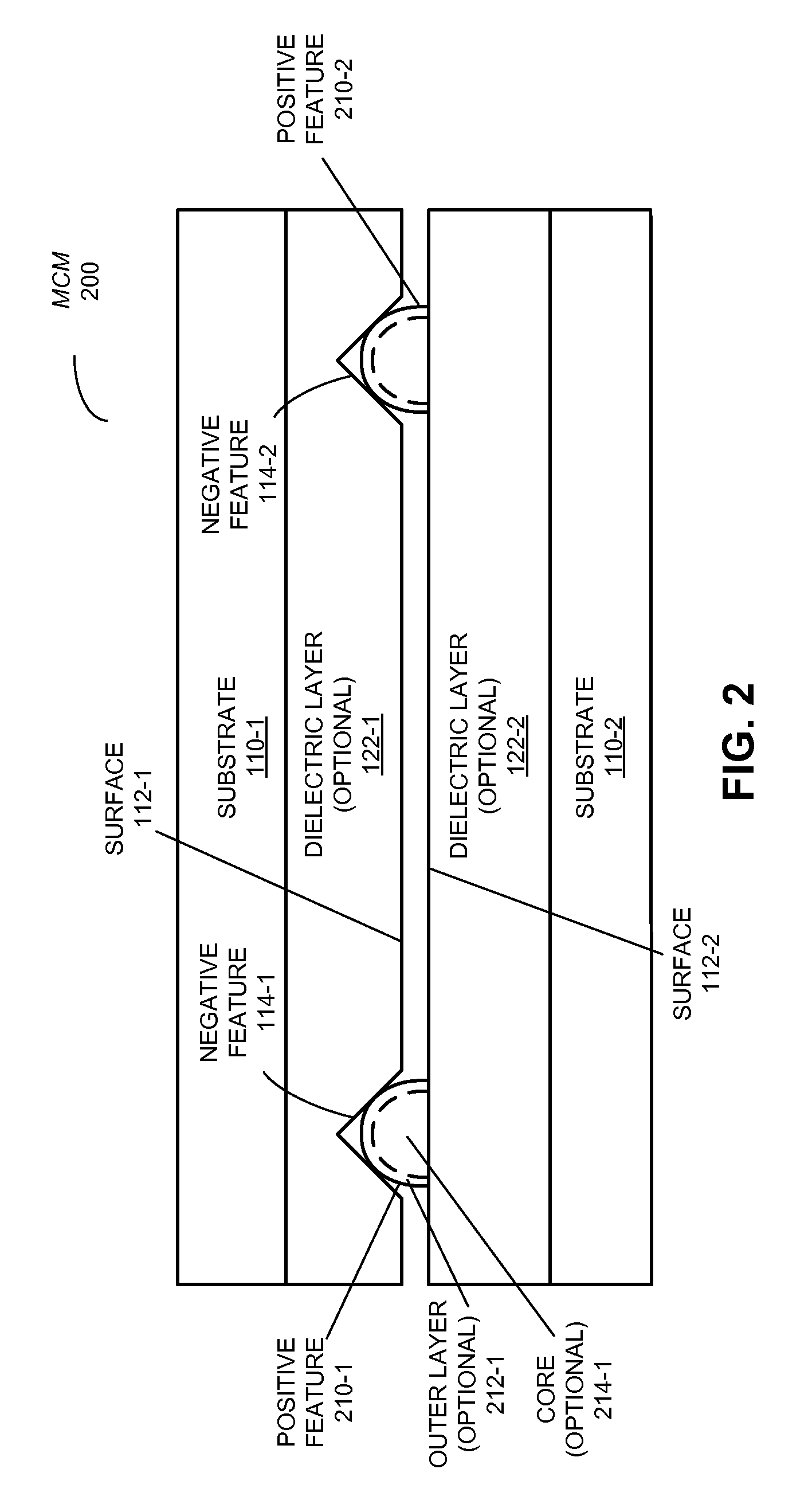Assembly of multi-chip modules using sacrificial features
a technology of multi-chip modules and features, applied in electrical apparatus, semiconductor devices, semiconductor/solid-state device details, etc., can solve the problems of poor manufacturing throughput, difficulty in increasing difficulties, and difficulty in achieving 1-3 m accuracy of flip-chip bonders, and achieve the effect of facilitating electrical coupling of components
- Summary
- Abstract
- Description
- Claims
- Application Information
AI Technical Summary
Benefits of technology
Problems solved by technology
Method used
Image
Examples
Embodiment Construction
[0026]The following description is presented to enable any person skilled in the art to make and use the disclosure, and is provided in the context of a particular application and its requirements. Various modifications to the disclosed embodiments will be readily apparent to those skilled in the art, and the general principles defined herein may be applied to other embodiments and applications without departing from the spirit and scope of the present disclosure. Thus, the present disclosure is not intended to be limited to the embodiments shown, but is to be accorded the widest scope consistent with the principles and features disclosed herein.
[0027]Embodiments of a multi-chip module (MCM), an electronic device that includes the MCM, and a technique for assembling the MCM are described. This MCM includes two substrates, having facing surfaces, which are mechanically coupled. Disposed on a surface of a first of these substrates, there is a negative feature, which is recessed below ...
PUM
 Login to View More
Login to View More Abstract
Description
Claims
Application Information
 Login to View More
Login to View More - R&D
- Intellectual Property
- Life Sciences
- Materials
- Tech Scout
- Unparalleled Data Quality
- Higher Quality Content
- 60% Fewer Hallucinations
Browse by: Latest US Patents, China's latest patents, Technical Efficacy Thesaurus, Application Domain, Technology Topic, Popular Technical Reports.
© 2025 PatSnap. All rights reserved.Legal|Privacy policy|Modern Slavery Act Transparency Statement|Sitemap|About US| Contact US: help@patsnap.com



